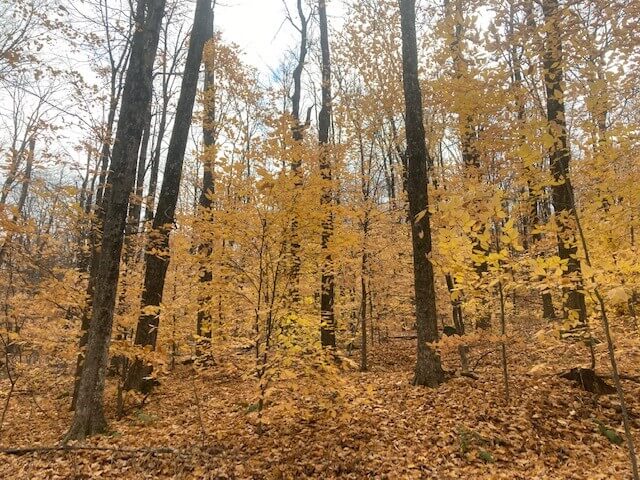Slight changes can ripple through a forest
Each of our native species occupies an ecological niche, influencing the ecosystem around it in different ways. The more we learn about forests, the more we discover how critical each species is to their health and function: from towering trees to tiny invertebrates, from the bats that regulate populations of defoliating insects to the rodents that disperse acorns, seeding future generations of oaks.
It is relatively easy to understand the profound impact of an extinction on an ecosystem. What is less apparent is when the role of a native species changes as a result of climate change, historic land use, non-native invasive pests and pathogens, and the many other components of global change. Our modern world has given rise to a phenomenon known as cryptic function loss: when the function of an ecosystem is altered by the extirpation (local extinction) of a species, a change in its abundance or a shift in its behavior as a result of global change.

A forest understory dominated by diseased beech clones. Once beech trees were massive, lived for 400-600 years and were 40-60 percent of all the trees in Chittenden County.
An example of cryptic function loss is the case of American beech. Historical records suggest that beech once accounted for 40-60 percent of the all trees in Chittenden County. While most of us know beech only as a sickly tree with cracked, pock-marked bark, it used to be very different. Once, beech trees were capable of becoming massive and ancient, living 400-600 years. One can only imagine how many habitats healthy beech trees once provided, how many species relied on their abundant beechnuts, in how many ways they shaped the forests of the past.
Today, beech is still common in our forests, but its behavior has changed entirely. With the introduction of beech bark disease (a non-native pathogen), most beech trees live only 40-60 years, dying centuries before they can reach the stature of their ancestors. When beech trees are stressed from beech bark disease, they produce clones from their root systems which can dominate the forest understory, creating a monoculture of trees destined to be as unhealthy as their parents.
Another example of cryptic function loss is the shape of our modern forests themselves. Vermont’s forests have regenerated from the near-complete deforestation of the 1800s, today covering about 75 percent of Vermont. This fact masks a complex reality: as a result of historic deforestation, the loss of wildlife species, the functional-loss of tree species like beech, elm, butternut and chestnut to non-native pests and pathogens, soil degradation and much more, our modern-day forests have been transformed. While Vermont’s forests (for the most part) consist of the same tree species that were here prior to European colonization, many components of pre-colonial forests — a diversity of tree species and forest types, structural diversity (trees of different sizes and ages), deep, well-developed soils, dead wood, and old trees — and the critical functions and habitats that they once provided are underrepresented or missing from our modern forests.
Cryptic function loss demonstrates a complex and important idea: that in ecosystems it is not enough for something (a species, a forest) to exist — the nuances of how it exists matter. Our forests are resilient and adaptive but also very sensitive. Slight changes in environmental conditions, or the presence or absence or behavior of a single species can have consequences that ripple throughout a forest community, causing harmful and destabilizing impacts.
To me, cryptic function loss is a call to action. In the midst of a climate crisis and a biodiversity crisis, it is our responsibility to protect the health and the resilience of forests, and the tens of thousands of species that rely on them, and to help them recapture the critical functions that have been lost. Actively managing for diversity and complexity is part of this, as is controlling biodiversity threats like non-native invasive plants, deer overpopulations, deforestation and forest fragmentation, as is promoting resistance to the causal agents of cryptic function loss — such as the non-native pathogens that affect native tree species like beech.
Considering the impact of cryptic function loss on our forests is alarming but also oddly hopeful. Unlike extinction, cryptic function loss is a phenomenon of things that still exist, of species and functions that may yet be rediscovered. Our modern forests have lost so much, but with our help they may find a better path forward.
(Ethan Tapper is the Chittenden County Forester for the Vermont Department of Forests, Parks and Recreation. See what he’s been up to, check out his YouTube channel, sign up for his eNews and read articles he’s written here.)

